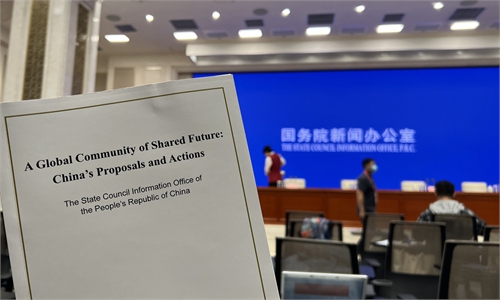Experts: Screening needed as cases now surging from zero between 2018-2021
PETALING JAYA: The spike in the number of malaria cases in several parts of the country so far this year is causing concern among public health experts, who cite climate change as among the contributory factors.According to the figures, the number of cases so far this year has already exceeded the 404 reported in the whole of 2022.
There were 215 cases reported in Kelantan this year and 840 cases in Sabah as of June, while Terengganu reported 26 cases over the first five months of the year.
ALSO READ : WHO sounds alarm over rise in malaria case numbers
These are worrying statistics after the country recorded zero human malaria infections from 2018 to 2021.
CLICK TO ENLARGE
© Provided by The Star Online
The rise in malaria cases also comes as the country is having to deal with an increase in dengue cases due to the hotter and drier weather caused by the El Nino phenomenon.
Malaria is caused by a parasite transmitted through the bite of an infected female anopheles mosquito.
Health experts said zoonotic malaria – carried by monkeys and spread to humans through mosquito bites – remain a concern and they have called for mass blood screening in affected areas.
The zoonotic transmission of malaria usually occurs among individuals residing near forest fringes, plantations and agricultural sites, affecting those involved in activities such as logging, fishing, planting and hunting-gathering.
Public health expert Datuk Dr Zainal Ariffin Omar said climate change and deforestation could be among the contributing factors. “It could also be due to people moving nearer to places that are a source of malaria,” said the former Health Ministry official.
Universiti Kebangsaan Malay-sia’s Prof Dr Sharifa Ezat Wan Puteh said warmer temperatures and changes in rainfall patterns due to climate change, as well as changes in the behaviour of mosquitoes carrying malaria could have also led to the increase in cases.
“In Kelantan, however, this could be more due to human- animal conflict,” she added.
She said while Malaysia has entered the phase of eliminating the indigenous transmission of malaria, zoonotic malaria transmitted from macaque monkeys remains a public health problem.
“Indigenous transmission” is the mosquito-borne transmission of malaria in a geographic area where malaria occurs regularly.
“The parasite known as Plasmodium Knowlesi is usually carried by macaque monkeys and spreads to people when a mosquito bites an infected macaque and then bites a person.
“This happens during logging, fishing, planting, deforestation or when entering a jungle.
“Monkeys also travel to nearby houses and villages and spread the parasite. It is also known as simian malaria,” she added.
Prof Sharifa Ezat said delays in seeking medical attention and a lack of preventive measures such as putting up mosquito nets might lead to a further increase in cases.
She said the disease could also be transmitted via the migration of people from malaria-prone countries to Malaysia.
She proposed the government conduct mass blood screenings to detect the malaria parasite among workers in the afflicted areas in Kelantan.
“We also need to keep a watchful eye on full-blown malaria cases, especially among children.”
Prof Sharifa Ezat said the resistance of malaria parasites to anti-malaria treatment drugs has also heightened the threat of the disease.
On Sept 25, Kelantan Health Department director Datuk Dr Zaini Hussin said the state had recorded 215 malaria cases this year, an increase of 84% – or 98 – cases compared with the same period last year.
Of this, 53 were human malaria infections and 162 involved zoonotic transmissions. However, there have been no malaria-related fatalities reported in the state so far.
Dr Zaini said frequent exposure to forests and plantations were among the factors leading to the increase in malaria infections in Kelantan.
Of Sabah’s malaria cases, 816 involved zoonotic malaria, followed by 14 imported human malaria cases, and 10 human-introduced malaria infections.
On March 14, Health Minister Dr Zaliha Mustafa said the country is facing a new threat in the form of rising zoonotic malaria cases.
Change reactive mentality to proactive mindset
IN response to Malaria makes a scary comeback
I would like to remind readers that “prevention is better than a cure”, in this case related to responsible design, construction and maintenance of residential and commercial premises. Abandoned construction sites where pools of water can collect must also be addressed and resolved.
Fully insect-screened windows and doors to the exterior reduce the risk of insects entering the premises. Sanitary vent pipes on the roof should also be sealed with non-corrosive aluminium insect mesh to stop mosquitoes from finding their way downwards (attracted by the sewer odour) and entering the toilet from floor drain outlets.
The best approach, however, is to ensure mosquitoes do not breed. The insects have a lifecycle of eight to 10 days – hence removing or draining stagnant water in your surroundings in good time will be effective.
Neighbourhood water retention ponds built to temporarily hold water to prevent flooding must be regularly maintained by removing rubbish and sediment at the final discharge point into the main stormwater drains to avoid the situation of ponding for more than a week and thus breeding mosquitoes.
Discarding rubbish, debris and kitchen waste into drains blocks water flow and creates mosquitoes habitats – restaurants, shops and food stalls are big contributors to smelly drain clogs and this uncivil behaviour must be stopped with a combination of education campaigns and strict enforcement.
When houses (and shops) are renovated, it is common to reduce or totally seal off the limited access openings to culverts, denying municipal workers the chance to clear the drains of obstructions. This can lead to stagnant water collecting for long periods, supporting endless lifecycles of mosquito reproduction.
Occasional chemical fogging and larviciding have been common reactions to cases of infections to destroy adult mosquitoes and larvae. However, this is a non-proactive reaction.
The reactive cure mentality must be replaced by the prevention – proactive – mindset that simply stops water from stagnating long enough to allow the mosquito to complete its reproduction cycle. So keeping culvert access unblocked as originally designed, disposing of rubbish and food wastes responsibly, maintaining any pool of water, all this will help to prevent mosquitoes from breeding as well as generally improve hygiene. A bonus: We won’t have to breathe in those nasty fogging vapours.
YEO CHONG MENG, Ampang, Selangor


























